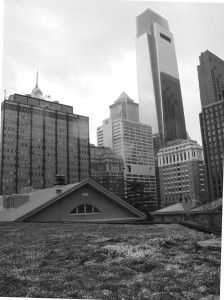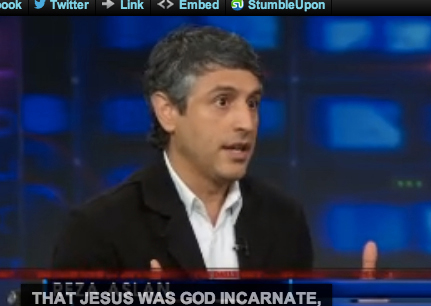In the late 1990’s the building that housed all the efforts and activities of the Friend’s Committee on National Legislation was literally falling apart. “There were filing cabinets lining a hallway upstairs,” recalls previous Executive Secretary Joe Volk, “and the drawers of those filing cabinets would open inward toward the center of the hallway as the floor flexed beneath you.” Eventually engineers informed FCNL’s governing committee that their building had become a safety concern. The organization was left with the difficult decision of replacing the existing building on the same lot or vacating Capitol Hill altogether in favor of a more economically viable location. Joe Volk recalls this analysis from a meeting for worship. “Friends we have painted ourselves into a corner. We have defined our site and building on Capitol Hill as a problem. But our building is an opportunity. If we see it as an opportunity, surely we will not want to rid ourselves of it. What can we do with this opportunity?”
Green buildings, although generally more expensive in initial building cost provide, on average, a quicker rate of return on investment. They also promise, among other benefits, lower operating costs in the future, a particularly attractive incentive for a non-profit, coupled with the potential for a more pleasant working environment, increased employee health and productivity, and increased property value in the future.
Even more importantly, reduced energy consumption and environmental impact speak directly to Quaker testimony, making it accountable to the global implications of energy and environmental issues. Part four of FCNL’s mission statement is entitled “We Seek an Earth Restored.” Ultimately, the problem that the building represented to FCNL and the organization’s constituents was reframed as an opportunity to make good on their mission, by keeping their location on the hill and “greening” the building. After a several year capital campaign they were able to pursue a green building with all of the benefits it would provide, and to remain in “a place just right.” “Here we had an opportunity to be a pattern to the world, to let our lives speak,” said Volk. FCNL built the first green building on Capitol Hill.
Though the underlying principles are not new, a recent increase in the momentum of the Green architecture and design movement is at least partially attributable to the coalescence of small scale efforts like that of FCNL. Similar action has been taken by other Quaker organizations in an effort to embrace, or actively live out defining ethical principles. The Philadelphia Friends Center underwent a similar green metamorphosis for the same reasons. During conversations about their impending renovation, the Friend’s Center board members decided to embrace available technologies and opportunities as a way of acting on principles central to their Quaker identity. Sentiments like rooting out war and its causes, promoting stewardship of the earth and other intertwining ideals could be realized by embracing them in their new building. As Patricia McBee, Director of the Philadelphia Friends Center put it, “We are acting in a socially responsible way because that’s what we want to see the world do. We are pioneering because we have committed ourselves to something bigger than money, and bigger than technology.” Sidwell Friends School underwent a green renovation with the same goals in mind.
There are of course, inherent problems and adjustment periods associated with the adoption of any new system. The geothermal pump systems at FCNL and the Philadelphia Friend’s Center both had issues. The grey water recycling garden at Sidwell was not entirely issue free and the pumps in the rainwater reclamation tanks at the Friends Center malfunctioned for a short time. But the common thread is that all of these organizations claim their trouble, investment and time is worth it, both from fiscal and environmental perspectives. The positive aspects outweigh the negative. Sidwell’s Steve Sawyer said although there was an increase in the “complexity factor,” and although issues were at first harder to diagnose, they now have a much more efficient system that takes the long view and is largely paying for itself. Of equal importance, their facility now serves as a teaching tool. Essential components were left exposed and are incorporated into lesson plans. Patricia McBee poses the following question regarding issues with their green renovations. “Was it a mistake for a small organization like Friends Center to do a geothermal system of this kind? It depends on how you look at it. From a prudent management standpoint, we really don’t have the maintenance capacity to deal with the challenges of what turns out to be more of an art than a science. On the other hand the human race is down the tubes on CO2. Is it right to remain with conventional, carbon based HVAC systems in the face of that even if it is difficult and expensive to do otherwise?”
McBee touches on the salient point with the aforementioned quote. There are larger underlying questions at stake than logistical or fiscal inconvenience. Is it right to continue to use conventional and outdated building technologies when we have alternatives available to us? Is it right to utilize dangerous and outmoded fossil fuels when alternatives exist? Green building practices provide an analogue for a larger imperative. Ultimately, green buildings and the initial inconveniences posed by adapting to new systems serve as a perfect lens with which to view the larger topic of climate change, and how we must learn to live with a changing energy economy.
The EPA calculates that nearly forty percent of annual national energy consumption is attributable to the aggregate needs of commercial and residential buildings, yielding forty three percent of national CO2 emissions. On a larger scale, whether they are commercial or residential, buildings account for ten percent of CO2 emissions worldwide. Although merely one component of a larger framework of issues that compose the daunting task of greenhouse gas reduction, this provides valuable context for understanding the necessity for changing the way buildings are designed and run. As Patricia McBee pointed out, it isn’t good enough to continue using inferior building technologies when cleaner and more efficient alternatives exist. By the same logic, it is unacceptable to promote and continue the use of a fossil fuel dependant energy economy. It isn’t good enough to do anything for the sake of convenience alone, or because we already have fossil fuel infrastructure in place. Given the scope and severity of the implications of an issue such as global climate change, adapting to new systems and patterns must be embraced as a fundamental part of the process of learning to deal with a changing energy economy, and the infrastructure that must change with it. Green building practices are but one component of the broader challenge of reigning in green house gas emissions. Maintaining a habitable planet will require unified, unflagging and comprehensive effort. These efforts must start with acting the way we want others to act, by being “a pattern to the world, by letting our lives speak.”




Comments on Friendsjournal.org may be used in the Forum of the print magazine and may be edited for length and clarity.